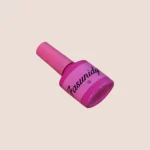Fake nails are an integral part of modern life and fashion, not only for their beauty, but also for the protection they offer natural nails. However, determining when to change false nails to maintain their optimal appearance is a common question. This article will explore the maintenance cycle of false nails and help you find the right time to change.
1. The maintenance cycle of false nails
- Daily maintenance: Explain how to carry out daily maintenance, including cleaning and care.
- Replacement cycle: Discuss the generally recommended replacement cycle and the impact on nail health.
2. Factors influencing the replacement cycle
- Type of material: Different materials for false nails may have different maintenance requirements and durability.
- Personal activity level: Active lifestyles may require more frequent changes and maintenance.
- Adhesive quality: A high-quality adhesive can extend the life of the false nails.
3. When to change false nails
- Reduced adhesiveness: When false nails start to fall off or are no longer firm.
- Nail growth: As nails grow naturally, false nails may no longer fit and require changing.
- Damaged appearance: If the false nails show cracks, discolouration or shading, it is time to think about a change.
4. Maintenance and Replacement Steps
- Correct removal: Illustrate how to remove false nails correctly without damaging the natural nails.
- Nail Care: How to care for and prepare nails before applying new false nails.
5. Professional advice
- Consult professionals: Suggest consulting a beautician regularly for professional advice on maintenance.
- Regular Checks: Encourage periodic checks on the condition of false nails to ensure that they are always in excellent condition.
Conclusion:
By learning the proper maintenance cycle for false nails and following proper maintenance practices, you can ensure that your nails are always healthy and beautiful. Remember, proper maintenance and replacement frequency are crucial to keeping fake nails looking good and prolonging their lifespan.




